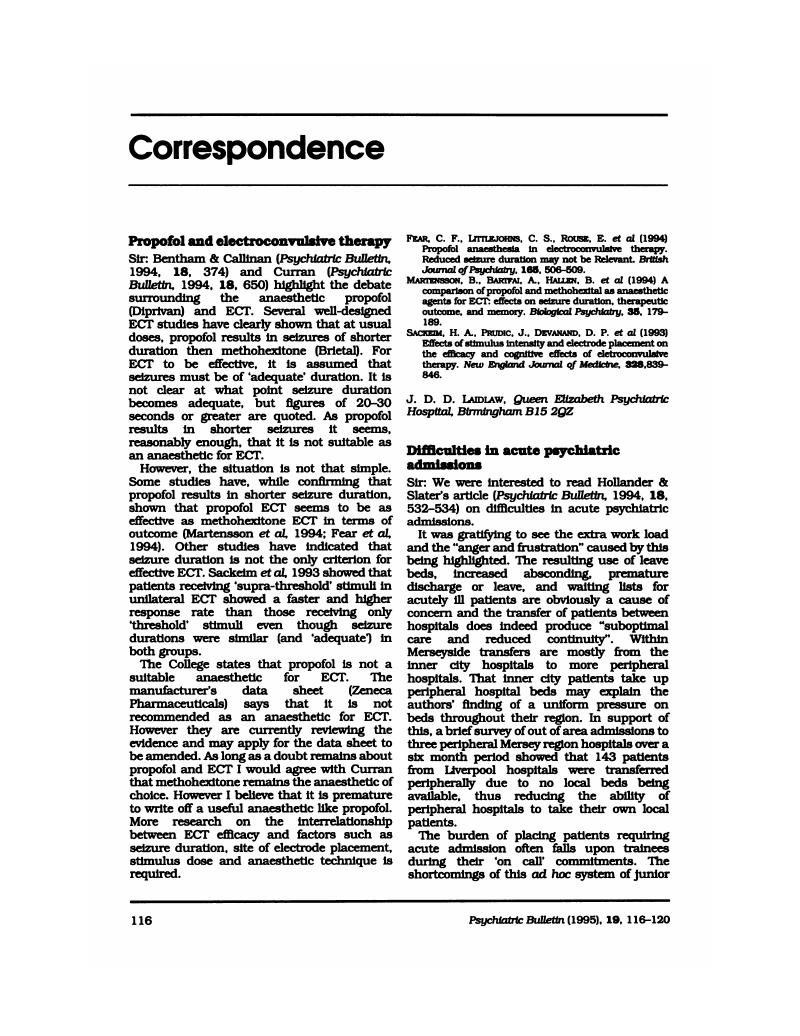No CrossRef data available.
Article contents
Propofol and electroconvulsive therapy
Published online by Cambridge University Press: 02 January 2018
Abstract
An abstract is not available for this content so a preview has been provided. As you have access to this content, a full PDF is available via the ‘Save PDF’ action button.

- Type
- Correspondence
- Information
- Psychiatric Bulletin , Volume 19 , Issue 2: The Journal of Trends in Psychiatric Practice , February 1995 , pp. 116
- Creative Commons
- This is an Open Access article, distributed under the terms of the Creative Commons Attribution (CC-BY) license (http://creativecommons.org/licenses/by/4.0/), which permits unrestricted re-use, distribution, and reproduction in any medium, provided the original work is properly cited.
- Copyright
- Copyright © Royal College of Psychiatrists, 1995
References
Fear, C. F., Littlejohns, C. S., Rouse, E.
et al (1994) Propofol anaesthesia in electroconvulsive therapy. Reduced seizure duration may not be Relevant
British Journal of Psychiatry.
165, 506–609.CrossRefGoogle Scholar
Martensson, B., Bartfai, A., Hallen, B.
et al (1994) A comparison of propofol and methohexital as anaesthetic agents for ECT: effects on seizure duration, therapeutic outcome, and memory. Biological Psychiatry, 35, 179–189.CrossRefGoogle ScholarPubMed
Sacked, H. A., Prudic, J., Devanand, D. P.
et al (1993) Effects of stimulus intensity and electrode placement on the efficacy and cognitive effects of eletroconvulsive therapy. New England Journal of Medicine, 328, 839–846.Google Scholar



eLetters
No eLetters have been published for this article.